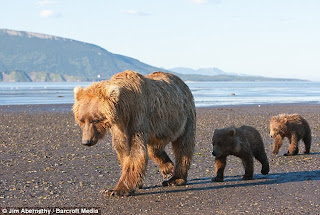By DAILY MAIL REPORTER

Walk on the wild side: Dog owners were found to be more active overall
Man's best friend may be more than just a faithful companion.
A new study has revealed dog owners are more likely to reach recommended fitness levels than people without a pet.
Researchers say people who own and walk their dogs regularly are 34 per cent more likely to hit exercise targets.
The results, said study co-author Mathew Reeves, from Michigan State University, show that promoting dog ownership and dog walking could help many people become healthier.
Using data from the Michigan Department of Community Health, researchers found that not only did owning and walking a dog affect the amount of walking a person does but also that dog walkers were more active overall.
The study showed people who walked their dogs generally walked about an hour longer per week than people who owned dogs but did not walk them.
Dr Reeves said: 'Obviously you would expect dog walkers to walk more, but we found people who walked their dog also had higher overall levels of both moderate and vigorous physical activities.
'There appears to be a strong link between owning and walking a dog and achieving higher levels of physical activity, even after accounting for the actual dog walking.'
The study analysed the amount of leisure-time physical activity a person gets, including playing sports, exercise conditioning and recreation such as walking, dancing and gardening.
It is recommended that people get at least 150 minutes of such activity a week.
source: dailymail





 10:33 PM
10:33 PM
 Animal news
Animal news















































